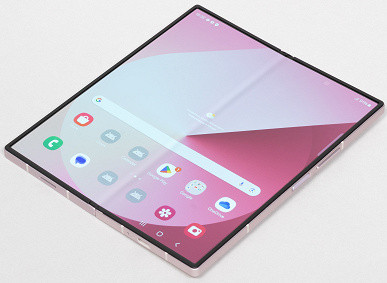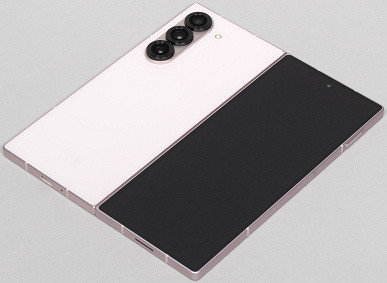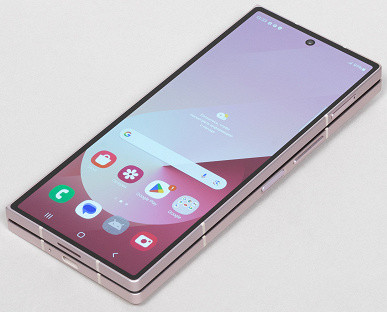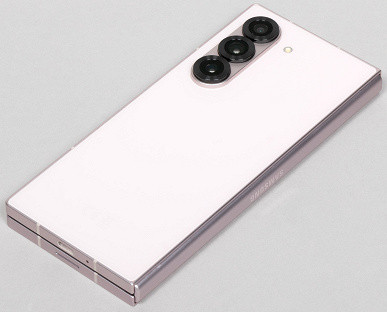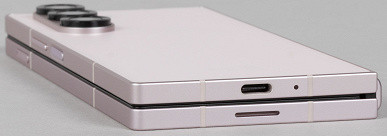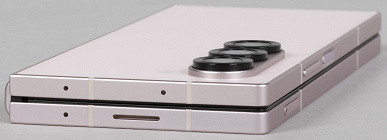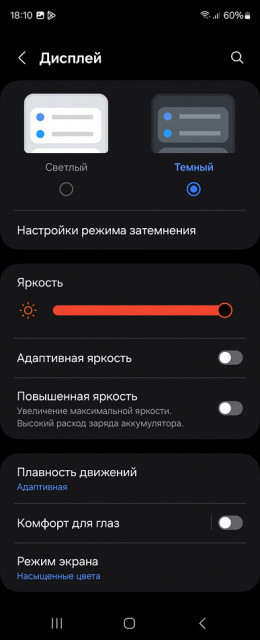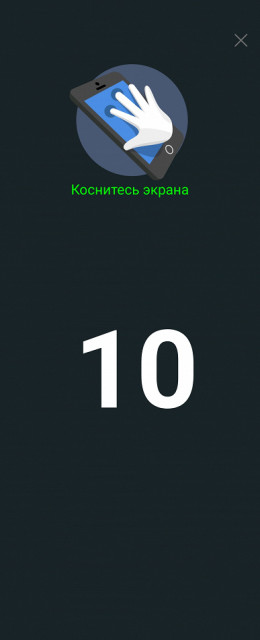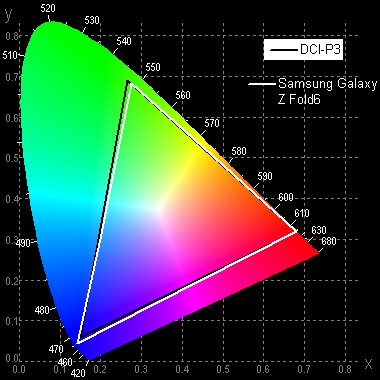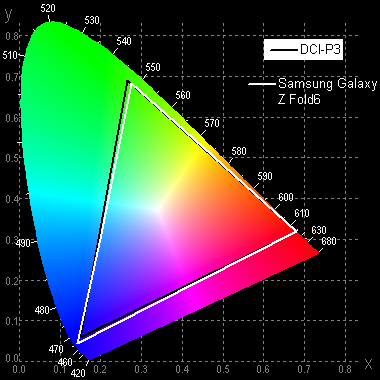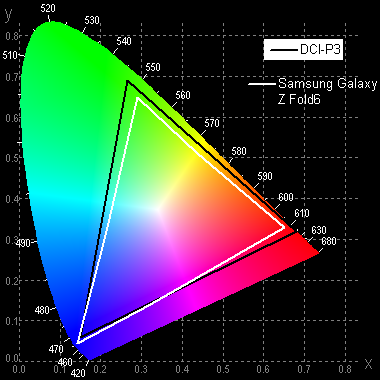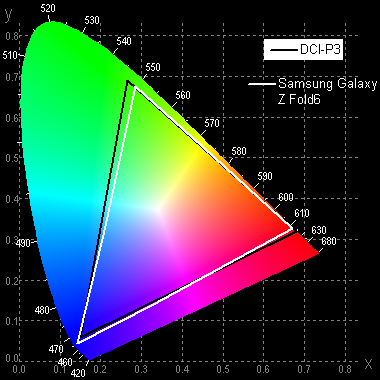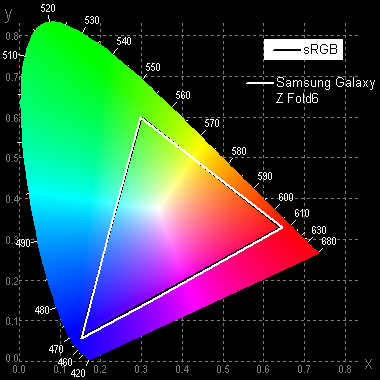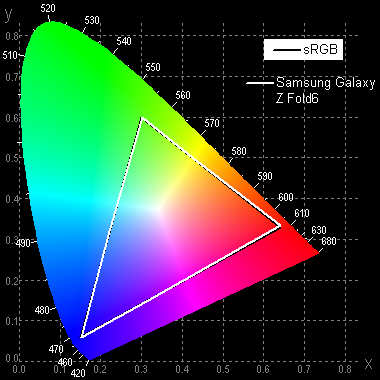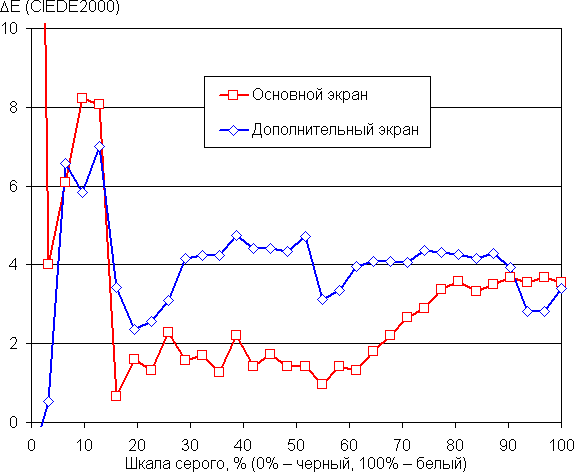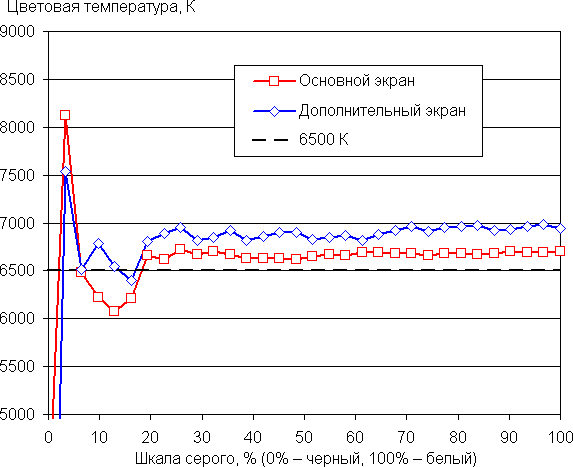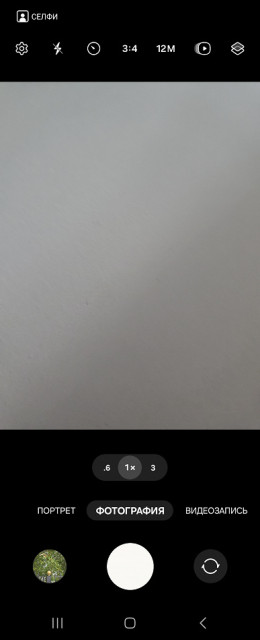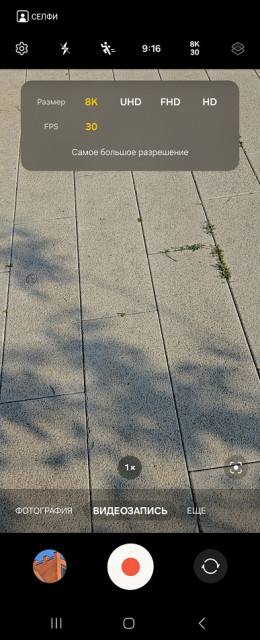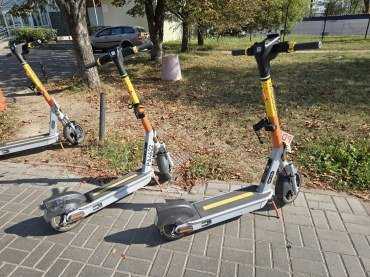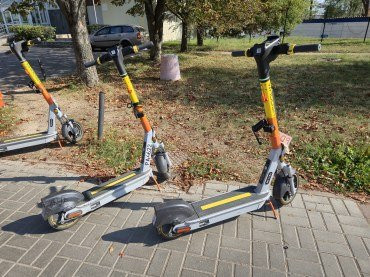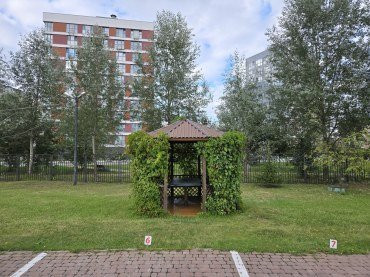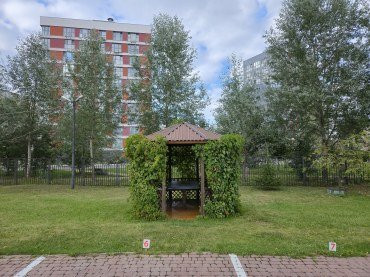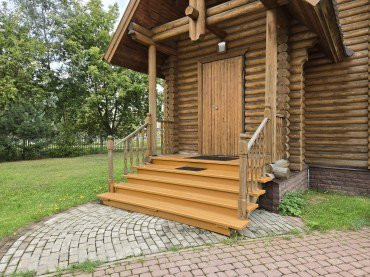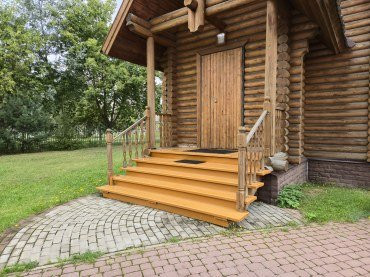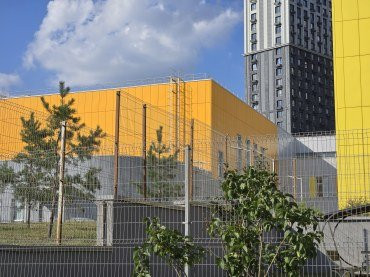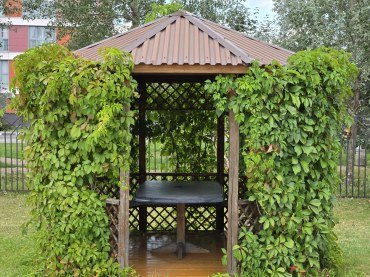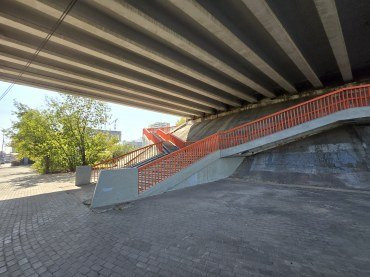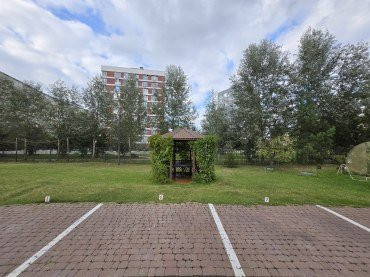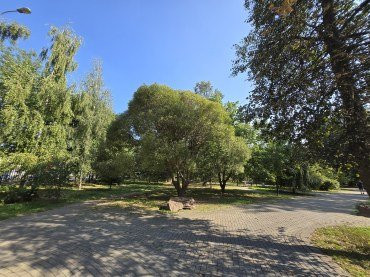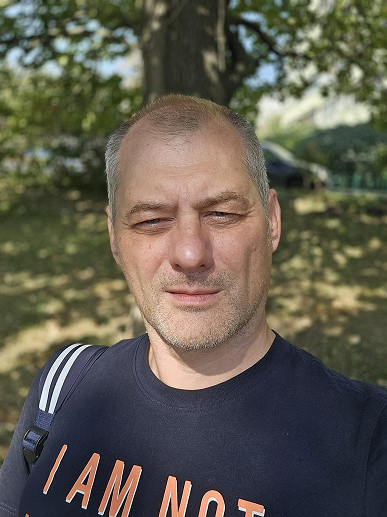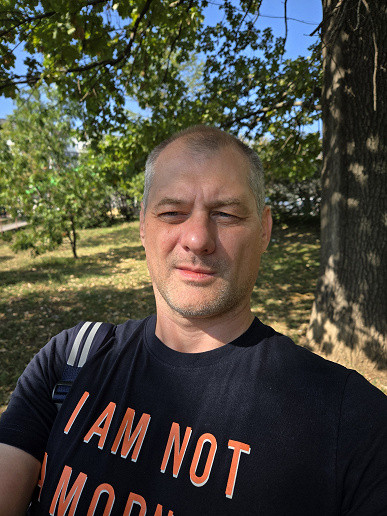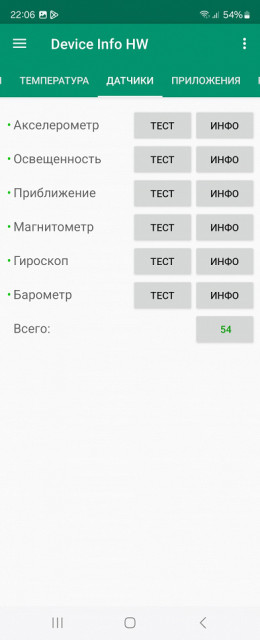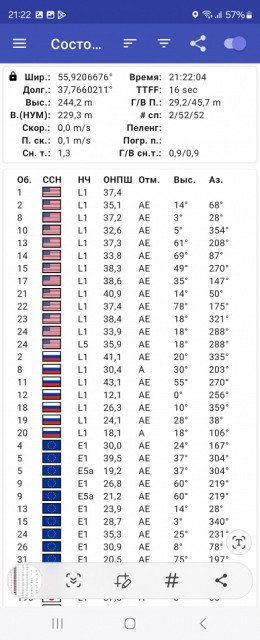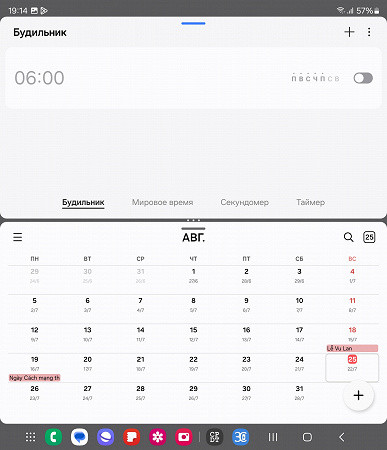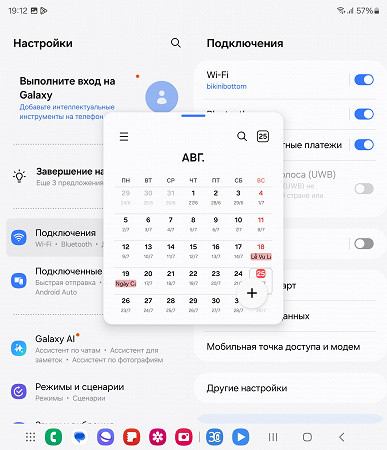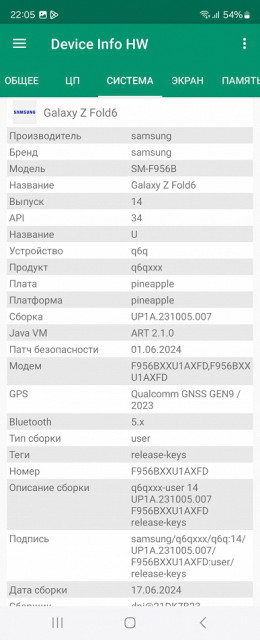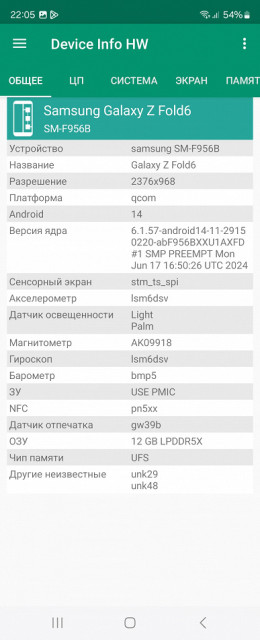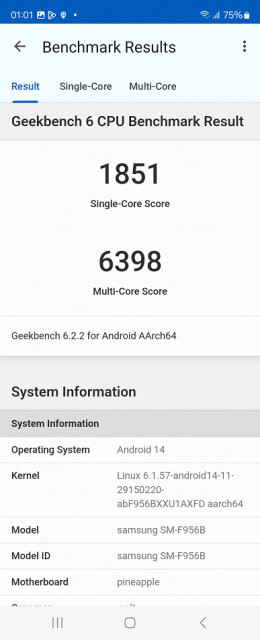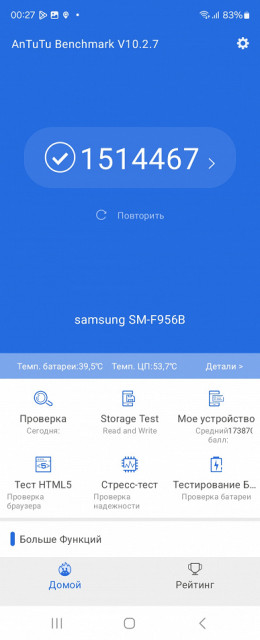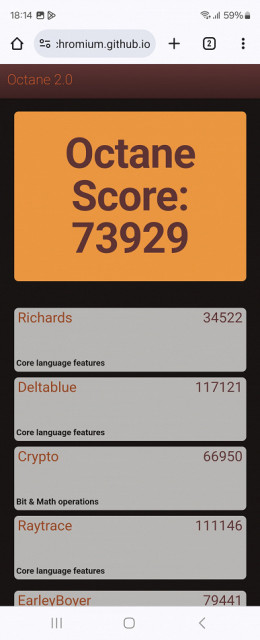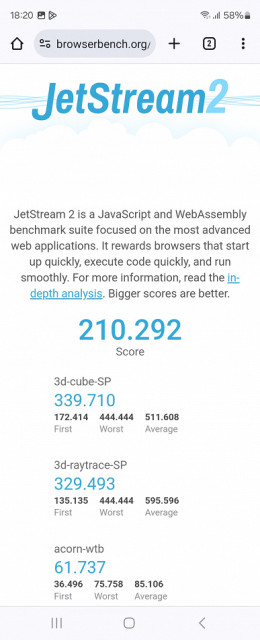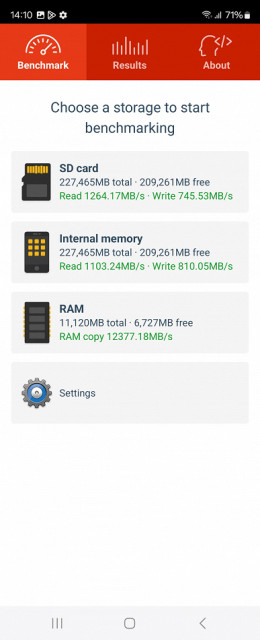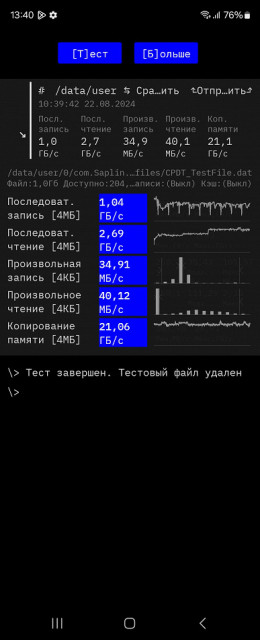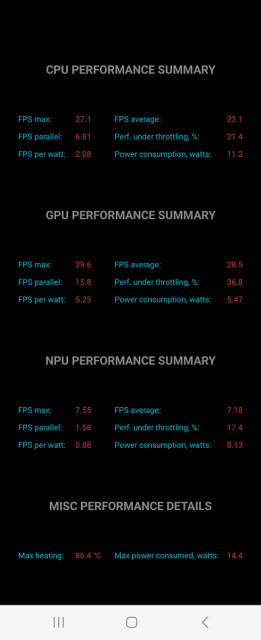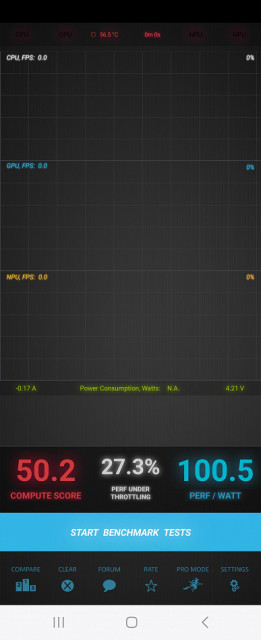Samsung Galaxy Z Fold6 is the new flagship smartphone of the Korean manufacturer in the series of folding devices. It is an expensive and stylish device, made in a thin case, equipped with a powerful Snapdragon 8 Gen3 chip, high-quality cameras and excellent screens. At the same time, it is a practical working tool and a multimedia center that combines the functions of a regular smartphone and a compact tablet, ideal for both work and leisure.
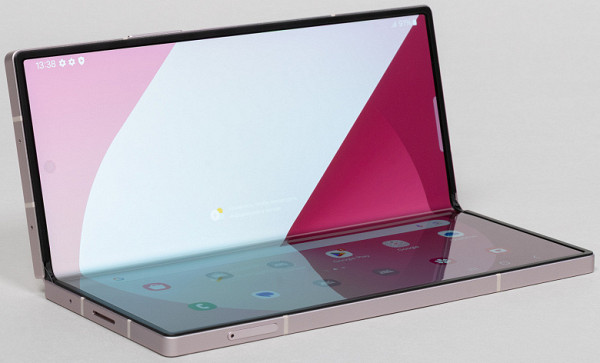
Main features of Samsung Galaxy Z Fold6 (model SM-F956B)
- SoC Qualcomm SM8650-AB Snapdragon 8 Gen3, 8 processor cores (1×Cortex-X4 @3.3 GHz + 3×Cortex-A720 @3.2 GHz + 2×Cortex-A720 @3.0 GHz + 2×Cortex-A520 @2.3 GHz)
- GPU Adreno 750
- OS Android 14, One UI 6.1.1
- Main (internal) touchscreen AMOLED, 7.6″, 1856×2160, 374 ppi, 120 Hz
- External touchscreen AMOLED, 6.3″, 968×2376, 410 ppi, 120 Hz
- RAM 12 GB, flash memory 256/512/1024 GB
- No microSD support
- Nano-SIM support (2 pcs.)
- Networks 2G GSM, 3G WCDMA, 4G LTE, 5G
- GPS/A-GPS, GLONASS, Galileo, BDS, QZSS
- Wi-Fi 6e
- Bluetooth 5.4, A2DP, LE, aptX HD
- NFC
- USB 3.2 Gen1 Type-C, USB OTG
- No 3.5 mm audio output for headphones
- Cameras 50 MP + 12 MP (wide-angle) + 10 MP (optical zoom 3×), video 8K@30 fps, 4K@60 fps
- Front cameras 10 MP + 4 MP
- Proximity and light sensors, magnetic field, accelerometer, gyroscope, barometer
- Fingerprint scanner (side)
- 4400 mAh battery, 25 W charging, 15 W wireless charging
- Dimensions 154×133×5.6 mm unfolded and 154×68×12.1 mm folded
- Weight 239 g
Appearance and ease of use
The Samsung Galaxy Z Fold6 is made in a folding book form factor, narrow and long when folded and almost square when unfolded. This is already the sixth generation of the Galaxy Z Fold series, which has gone through many changes and improvements during its evolution. This time, Fold users received a completely matte, practical device that does not have a glossy finish. The smartphone does not collect fingerprints, fits comfortably in the hand, does not slip out and is comfortable to use both unfolded and folded.
When unfolded, the Z Fold6 is an almost square mini-tablet, only half a centimeter thick. The hinge, which has been improved again, securely fixes the halves of the device in various intermediate positions, with the exception of the extreme ones. In the extreme positions, the closer is activated, ensuring reliable fixation of the flaps.
When folded, there is no gap between the halves of the device, and there is a rim around the perimeter of the screen that prevents parts of the screen from touching and wearing out when folded. Compared to the Fold5, the new Fold6 has become lighter: its weight is 239 grams, while the previous model weighed 253 grams.

The materials used are of high quality: the body and sides are made of reinforced aluminum, and the back panel and front screen are protected by Corning Gorilla Glass Victus 2. The back and side surfaces have a matte, non-marking finish. The side edges are flat, and the gap between the halves when folded is almost invisible, which makes them difficult to move apart, especially when moving.

The external display has an elongated aspect ratio of 22:9, which differs from the more traditional proportions of conventional monoblocks. Because of this, the screen is narrower, the fonts are smaller, and less information fits on one line. However, thanks to the narrow screen, using the smartphone with one hand becomes much more convenient.
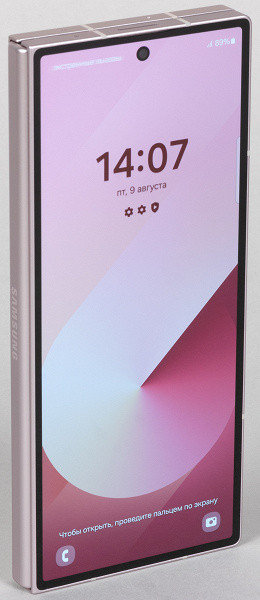
The inner screen is protected by ultra-thin flexible glass, which has a distinct «wrinkle» where the halves meet. This fold is noticeable at the tactile level, but does not cause discomfort when using the screen.
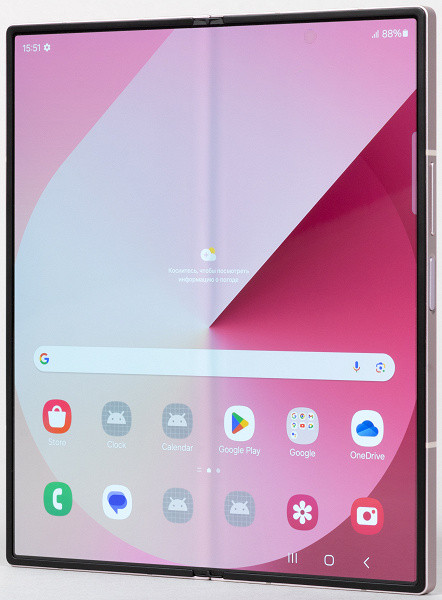
The fingerprint sensor is not located under the screen, but in the flat area of the power and lock buttons, which is a convenient solution. The scanner works quickly and accurately, being located right under the finger.
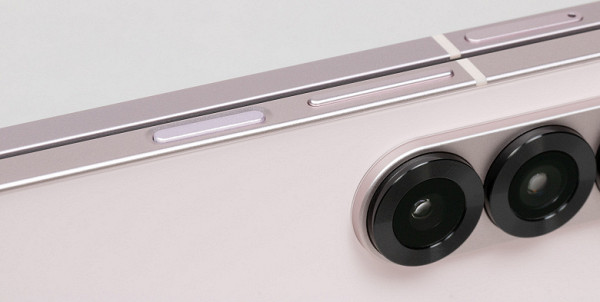
The card tray can accommodate two Nano-SIM cards without the ability to install memory cards.
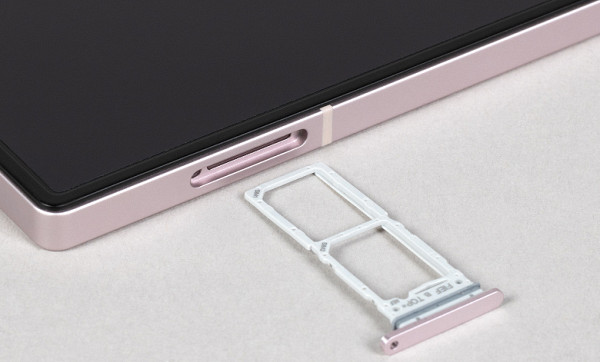
Both screens have selfie cameras embedded in them (4MP internal and 10MP external), but the internal lens is hidden.
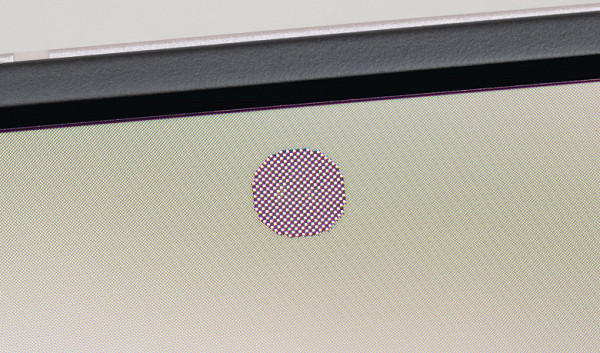
The top and bottom edges of both halves of the device feature four microphones, two stereo speakers, and a USB Type-C port. However, there is no 3.5mm audio jack for wired headphones.
The smartphone is available in three color options: gray, pink and blue. The case is certified for protection against moisture and dust according to the IP48 standard, which allows the device to be completely immersed in water to a depth of 1.5 meters for 30 minutes.
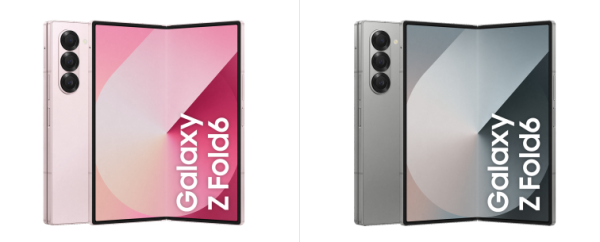
Screen
The Samsung Galaxy Z Fold6 is equipped with a main AMOLED display (flexible OLED) with a diagonal of 7.6 inches and a resolution of 1856 × 2160, which provides a pixel density of 374 ppi. The physical dimensions of the matrix are 126 × 147 mm. The screen supports a refresh rate of 120 Hz and HDR10 +.
The external AMOLED display has a diagonal of 6.3 inches and a resolution of 968 × 2376, providing a pixel density of 410 ppi. Its physical size is 60 × 147 mm, and a refresh rate of 120 Hz is also supported.
The front surface of the main folding screen is made of plastic and covered with a protective film, the removal of which is prohibited, since it is part of the display. The film is relatively scratch-resistant — it was not possible to scratch it with a fingernail. The smooth surface of the flexible screen is slightly uneven and has a pronounced fold at the bend, but this does not affect the image quality when viewed at a straight angle. The outer screen is a glass panel with a smooth surface, which is also resistant to scratches. The anti-glare properties of the outer screen are slightly better, while the larger screens have similar characteristics as the Google Nexus 7 (2013).
Doubling of reflected objects on the screens is minimal, which indicates that there is no air gap between the layers. This improves visibility in bright external lighting conditions due to a smaller number of boundaries with different refractive indices. The outer screen has an effective oleophobic coating, which repels grease better than the Nexus 7. The film on the large screen also has such properties, which makes it much easier to remove fingerprints.
When displaying a white field on the screen and manually adjusting the brightness, the maximum values are 400/400 cd / m² (main / outer screens). In the high brightness mode, these values \u200b\u200bincrease to 685/670 cd / m², and in bright conditions, automatic adjustment allows you to reach 1320/1330 cd / m². The manufacturer claims a maximum brightness of 2600 cd / m², but this does not apply to the white field on the entire screen. The smaller the white area on the screen, the higher the actual brightness, which ensures excellent readability of both screens in the sun. The dark theme not only saves battery power, but also improves legibility in bright light. The minimum brightness value is 0.7/0.8 cd/m², which allows comfortable use of the device in complete darkness.
Automatic brightness control works based on light sensors located under the screens. It adapts to the position of the brightness slider, allowing the user to set the desired level. With standard settings in complete darkness, auto-brightness reduces the brightness to 10/9 cd/m², in office conditions (approximately 550 lux) — to 120/115 cd/m², and in bright sunlight it reaches 1320/1330 cd/m². During the experiment in the dark, the brightness remained at the set level, and in the office it hardly changed, which confirms the adequacy of the auto-adjustment function.
A significant modulation with a frequency of 480 Hz is observed at all brightness levels. Below are graphs showing the dependence of brightness (vertical) on time (horizontal) for different brightness settings.
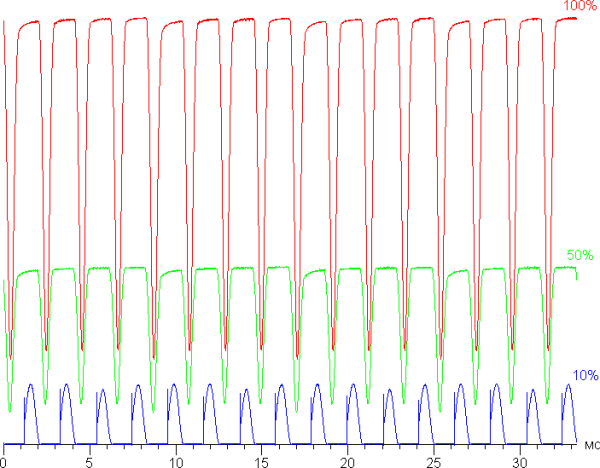
Main screen
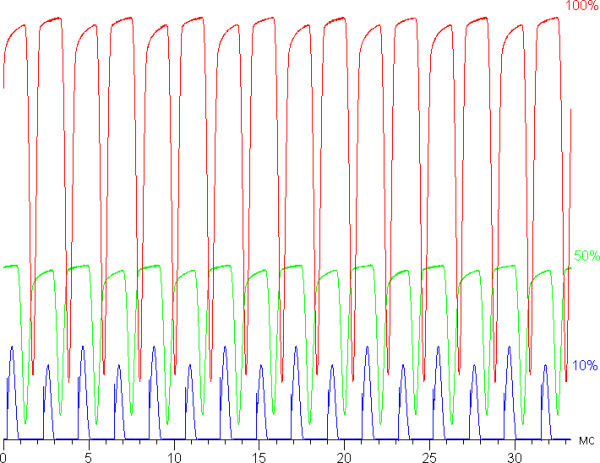
Additional screen
At high brightness, the modulation duty cycle is low, so flickering is not observed. However, when the brightness is significantly reduced, modulation with a high duty cycle occurs, which can be seen in stroboscopic tests or with rapid eye movement. Depending on individual sensitivity, such flickering can lead to fatigue. However, the modulation phase varies across the entire screen area, and the high frequency (480 Hz) reduces the negative impact.
In the display settings, a mode with an increased refresh rate of up to 120 Hz is available, which, at a minimum, improves the smoothness of scrolling through menu lists.
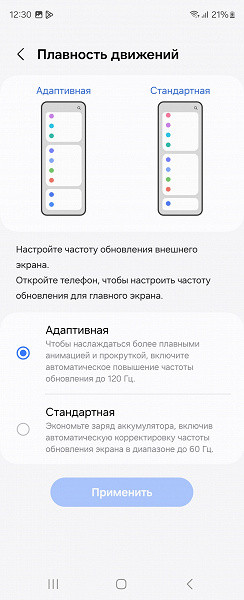
The modulation pattern remains unchanged. It is important to note that in any case, if the screen is not touched, the refresh rate is reduced to 24 Hz.
Both displays use a Super AMOLED matrix — an active matrix based on organic light-emitting diodes. A full-color image is formed using subpixels of three colors: red ®, green (G) and blue (B). At the same time, the number of red and blue subpixels is two times less, which can be designated as RGBG. This can be confirmed using a fragment of a microphotograph:
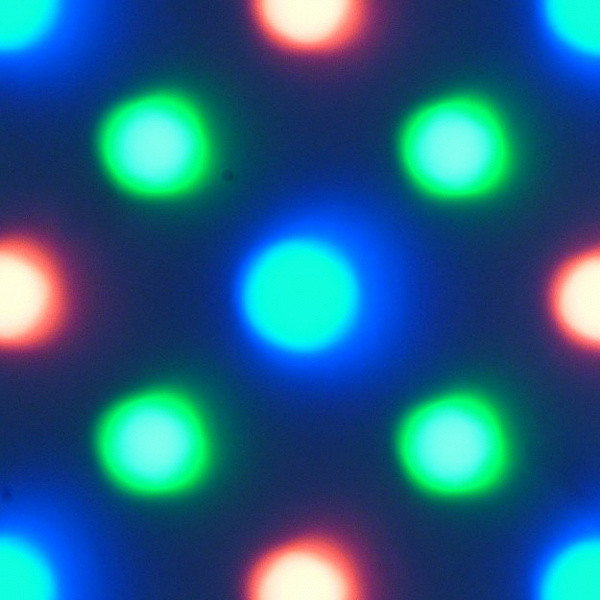
Main screen
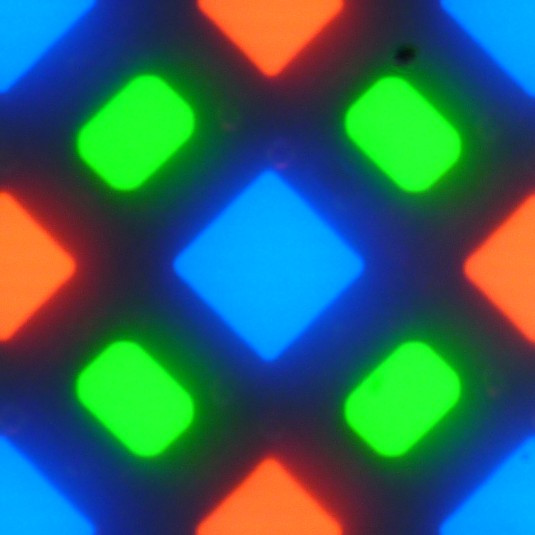
Additional screen
In the given fragment, you can count four green subpixels, two red (four halves) and two blue (one whole and four quarters). These fragments can be repeated, creating a whole screen without gaps and overlaps. For such matrices, Samsung uses the PenTile RGBG designation. The screen resolution is determined by the green subpixels, and for the other two it will be lower. Some unevenness of contrast borders and other artifacts are observed, but due to the high resolution, they minimally affect the image quality.
The screens of this smartphone have excellent viewing angles. The brightness at an angle decreases noticeably (compared to the Nexus 7), but in the case of this smartphone, the drop in brightness is much less pronounced. As a result, even with the same formal brightness, the screens of a mobile device look much brighter (compared to LCD screens), since they are often viewed at an angle. However, with a significant deviation, white can acquire a slight blue-green tint, while black remains deep and saturated at any angle. It's so black that the contrast parameter is not applicable. For comparison, here are photos of the smartphone and the second participant (Nexus 7, below) displaying the same images at about 200 cd/m², with the color balance on the camera set to 6500 K.
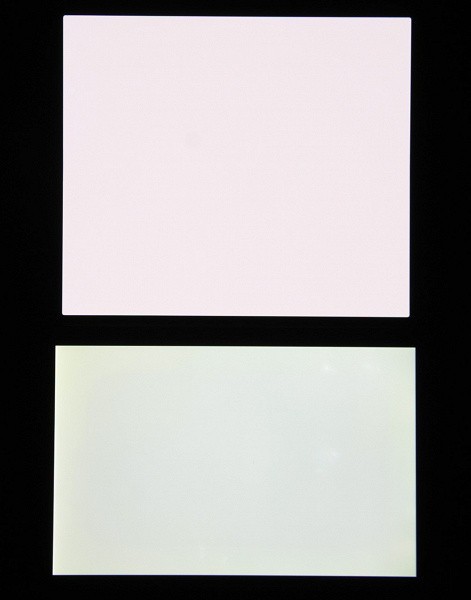
Main screen
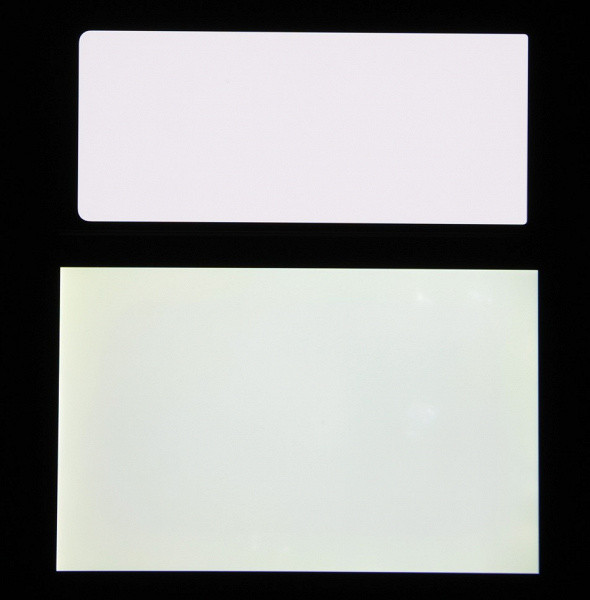
Additional screen
Note the good uniformity of brightness and color tone of the white field.
And the test picture (Natural Colors profile):
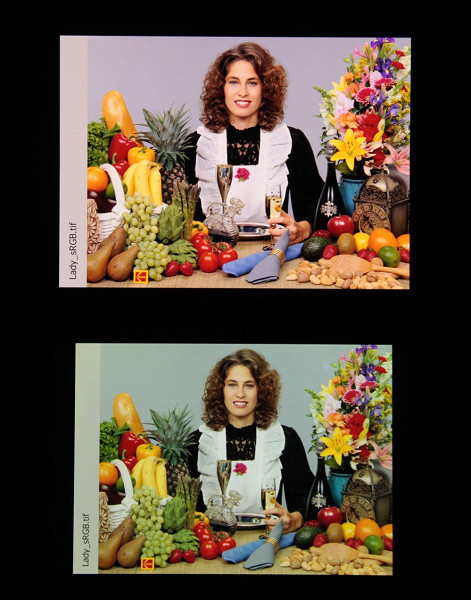
Main screen
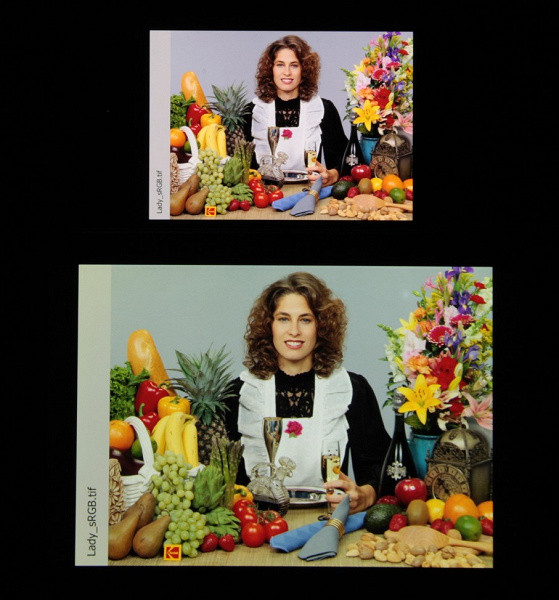
Additional screen
The color rendering on the screens is good, the colors have moderate saturation, and the color balance is slightly different from that of the Nexus 7 screen. It should be remembered that the photo is not a reliable source of information about the quality of color rendering and is used only for conditional visualization. For example, a noticeable reddish tint of the white and gray fields in the photos of the smartphone screens is visually absent when viewed perpendicularly, which is confirmed by hardware tests using a spectrophotometer. This is due to the fact that the spectral sensitivity of the camera matrix does not match the characteristics of human vision.
The photo above was taken after selecting the «Natural colors» profile in the screen settings; there are two such profiles available.

Let's see what happens if we select the Saturated Colors profile (this is the default):
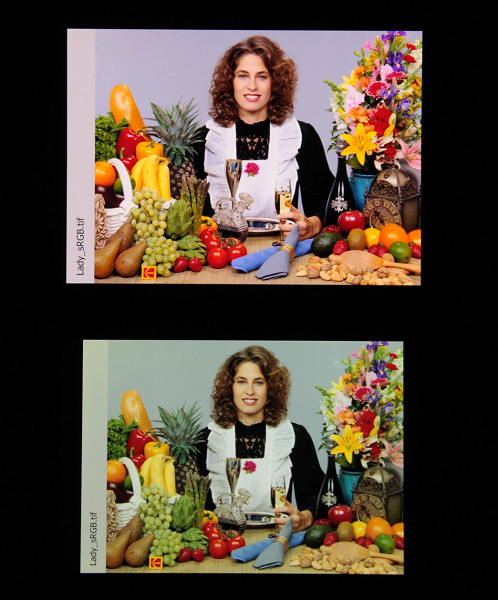
Main screen
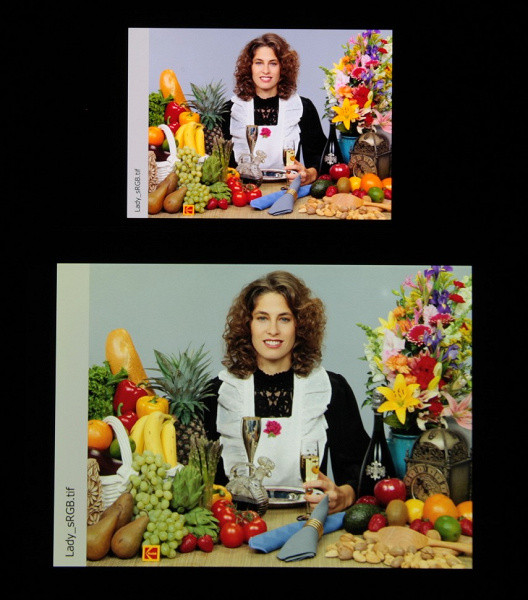
Additional screen
The colors on the smartphone screens have increased saturation.
The state of the matrix elements switches almost instantly, but at the switching front there may be a step of about 17 ms (which corresponds to a screen refresh rate of about 60 Hz) or about 8 ms (at 120 Hz). For example, the dependence of brightness on time when switching from black to white in 60 Hz and 120 Hz modes looks like this:
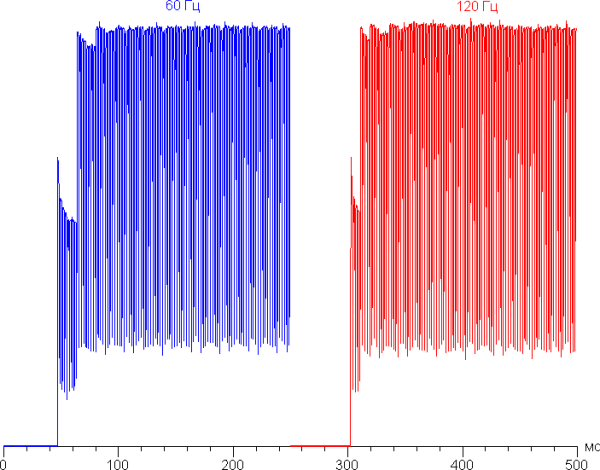
Main screen
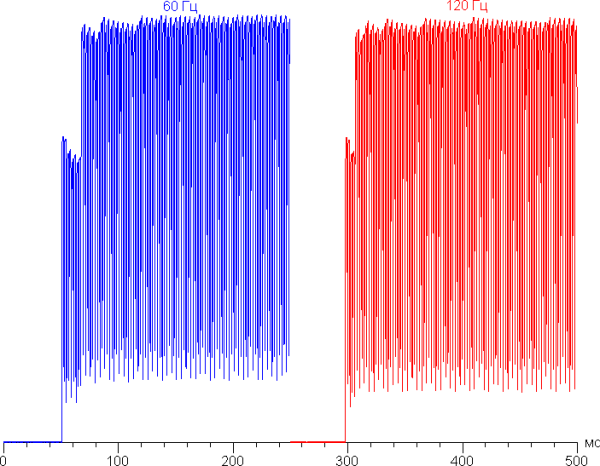
Additional screen
In certain conditions, such a step can cause trails that appear behind moving objects.
The gamma curve constructed on the basis of 32 points with equal intervals by the value of the shade of gray demonstrated the absence of significant distortions in both highlights and shadows. The parameter of the approximating power function was 2.08/2.02, which is lower than the standard value of 2.2. At the same time, the real gamma curve deviates slightly from the power dependence:
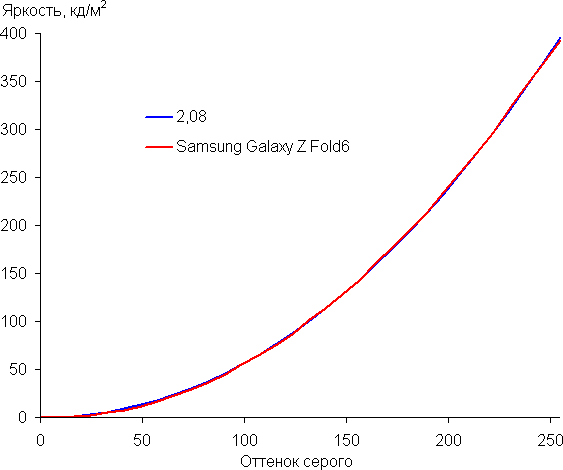
Main screen
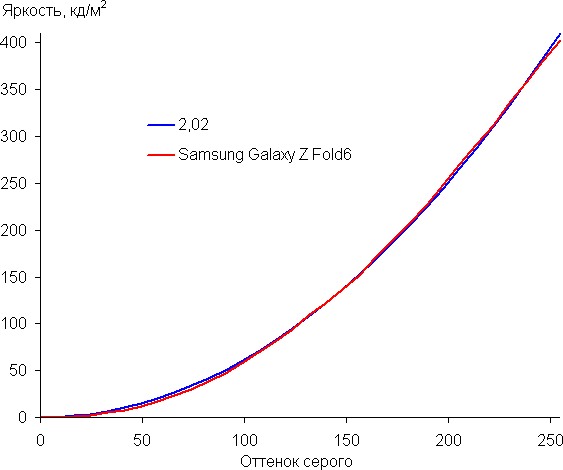
Additional screen
It should be noted that on OLED screens, the brightness of individual image fragments changes dynamically depending on the content of the displayed image, which leads to a decrease in brightness for light areas. As a result, the dependence of brightness on hue (gamma curve) may not fully correspond to the gamma curve of a static image, since measurements were taken with sequential display of gray shades over almost the entire screen area.
The color gamut when using the "Saturated Colors" profile is wide and very close to the DCI-P3 standard.
You can reduce the saturation a little by using the Brightness setting on the Advanced tab.
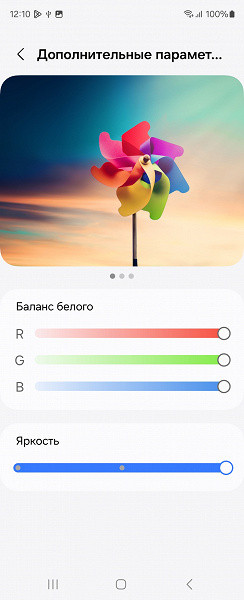
Example for the main screen for the first and second values of this setting (the third has maximum saturation):
When you select the Natural Colors profile, the gamut is compressed to the sRGB limits:
Without correction (Saturated Colors profile) the component spectra are well separated (although there is some mixing of green with red):
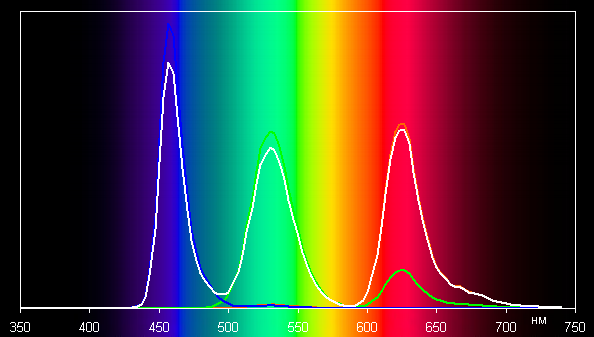
Main screen
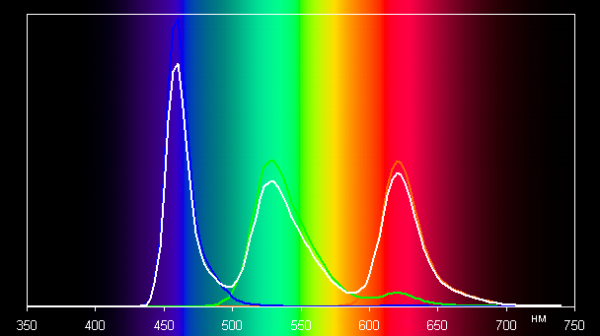
Additional screen
In the case of the Natural Colors profile, the color components are already more strongly mixed with each other:
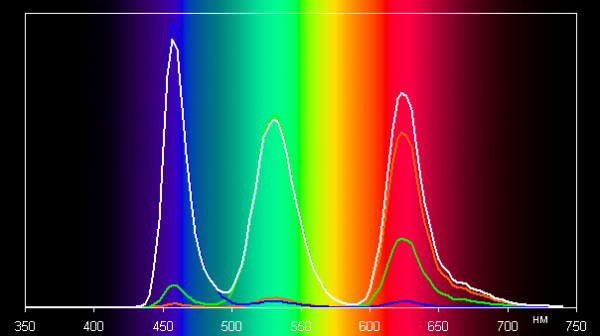
Main screen
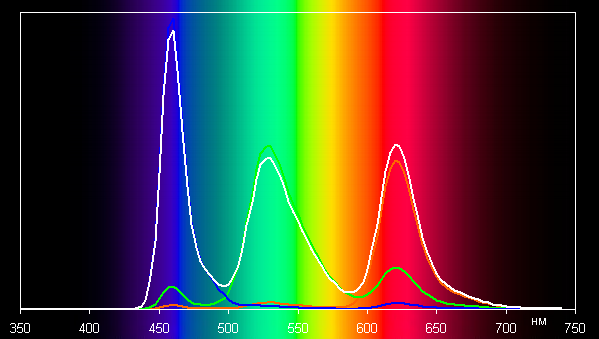
Additional screen
It should be noted that on wide-gamut displays, the colors of regular images intended for sRGB devices may appear oversaturated without appropriate correction. Therefore, it is recommended to select the Natural Colors profile for viewing movies, photos, and other natural content. The Vivid Colors profile should only be used when the photo or video material is made with the DCI gamut used in digital cinematography. The grayscale balance remains good after selecting the Natural Colors profile. The color temperature is close to 6500 K, and over a significant portion of the grayscale this parameter changes insignificantly, which has a positive effect on the perception of the color balance. The deviation from the absolutely black body spectrum (ΔE) in most areas of the grayscale remains below 10 units, which is considered a good indicator for consumer devices, and the spread of this value is also small.
(The darkest areas of the gray scale usually do not play a significant role, since the color balance in them is not so important, and the measurement error of color characteristics at low brightness is quite large.)
For some reason, only when selecting the «Saturated Colors» profile is the color balance adjustment available, including color temperature adjustment and three parameters for changing the intensity of the main colors. However, due to the too wide color gamut in this profile, adjusting the balance does not make much sense.
The settings include the popular «Eye Comfort» function, for which a more or less accurate description is provided.

As a reminder, bright light can disrupt circadian rhythms. Therefore, if you use a tablet or smartphone late at night, it is recommended to reduce the screen brightness to a comfortable, but not too low level. However, yellowing of the screen is not necessary.
The device supports DisplayPort Alt Mode over USB Type-C, which allows you to output image and sound to external devices when connected to this port. We tested this mode with the Dell DA200 adapter, although it is not ideal, since it does not have an external power supply.
When connected to a monitor, video is output in 1080p format at 60 Hz. The user can choose between two modes: mirroring the smartphone screen and Samsung DeX mode, which provides an alternative desktop. In Samsung DeX mode, the desktop is displayed on the monitor, and the smartphone screen can be used as a touchpad or continue to be used as usual.
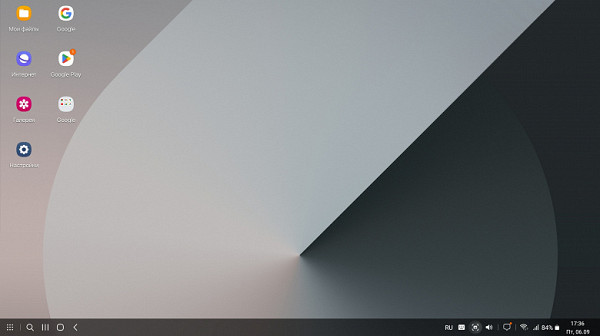
Most Android apps can run on the DeX desktop.
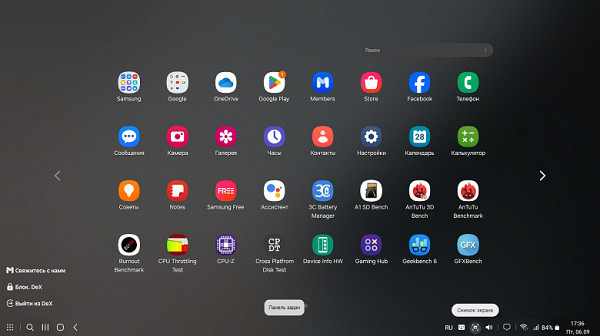
The control panel at the bottom of the screen is hidden when the image is displayed on the full screen, for example, during video playback. The output to the monitor is carried out with a resolution of 1920 by 1080 pixels in the exact match mode. It is also worth noting that simultaneously with the transfer of image and sound, you can connect a mouse and keyboard via USB or Bluetooth, which allows you to use the smartphone as a workplace. In addition, the devices can read data from USB drives and memory cards. Connection to a wired network at a speed of 1 Gbps is also provided.
To summarize, both screens demonstrate very high maximum brightness (1320/1330 cd/m²) and have excellent anti-glare properties, which allows you to comfortably use the device even outdoors in sunny weather. In complete darkness, the brightness can be reduced to comfortable values (up to 0.7/0.8 cd/m²). An adequate automatic brightness control mode works. Positive aspects of the screens include an effective oleophobic coating, support for a refresh rate of 120 Hz and a color gamut close to sRGB (with the right profile selection), as well as a good color balance. It is also worth noting the general advantages of OLED screens, such as true black (without reflections) and significantly less loss of brightness when viewed at an angle compared to LCD screens. Disadvantages include modulation of the screen brightness at a frequency of 480 Hz, due to which flickering may be observed at low brightness in certain conditions. This can cause increased fatigue in users sensitive to flickering. Nevertheless, in general, the quality of the screens is very high.
Camera
The Samsung Galaxy Z Fold6 smartphone is equipped with three main rear cameras and two front cameras for selfies, which are built into the outer and inner screens.
- Main camera: 50 MP, 1.0 μm pixel size, f/1.8 aperture, 23 mm focal length, Dual Pixel PDAF and optical image stabilization (OIS).
- Telephoto camera: 10 MP, 1.0 μm pixel size, f/2.4 aperture, 66 mm focal length, PDAF, OIS and 3× optical zoom.
- Wide-angle camera: 12 MP, 1.12 μm pixel size, f/2.2 aperture, 123˚ field of view, 12 mm focal length.
- Front camera (external): 10 MP, 1/3″ sensor size, 1.22 µm pixel size, f/2.2 aperture, 24 mm focal length.
- Front camera (internal): 4 MP, 2.0 µm pixel size, f/1.8 aperture, 26 mm focal length.
The main camera is equipped with a high-quality 50-megapixel sensor with a 1-micron pixel size, advanced phase autofocus, and optical stabilizer. By default, the camera takes photos with a resolution of 12 MP by pixel binning, but also provides the ability to shoot in full 50 MP resolution. In thumbnails, photos taken in different modes are almost identical. Although the detail of 50-megapixel photos is slightly higher, this is achieved mainly due to the added contour sharpness. In general, we do not see any reasons to use this mode.
Overall, the camera delivers excellent image quality, offering good detail, adequate dynamic range, and correct contrast. Color reproduction remains virtually unchanged.
Here are some more examples of photos taken in auto mode:
At night, the camera shows good image clarity, avoiding noise reduction artifacts and providing adequate exposure. Contour sharpness is increased carefully and moderately. Colors are somewhat saturated, but overall the result is impressive.
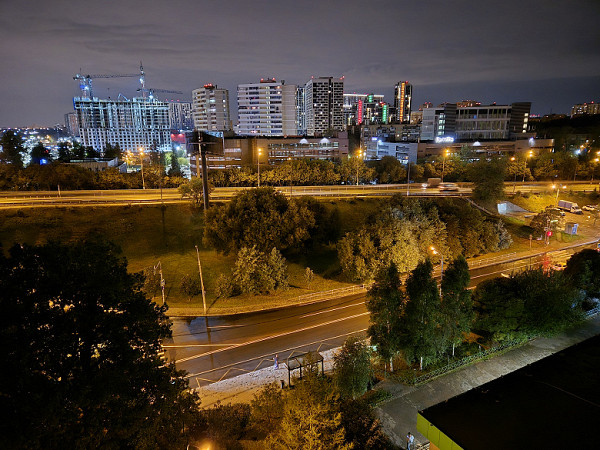
Photos using zoom are also taken at a quarter of the sensor resolution, which means using pixel binning. This module has optical stabilization and advanced phase autofocus. The long-focus camera with three-fold optical zoom demonstrates decent results, not inferior to the main camera: sharpness, clarity and detail are at a high level. The image is contrasty and voluminous, and the color rendition is natural, without oversaturation. However, noise is not suppressed perfectly, and its remnants, as well as the effects of noise reduction, are noticeable, especially on thin lines, such as wires against the sky.
The quality of shooting on the wide-angle module exceeds the performance of most average «wide-angle» cameras. Although this camera is certainly inferior to the main one in terms of detail, the photos are rich, bright and contrasting. Blurring at the edges of the photo is quite acceptable. If you are not embarrassed by the inevitable strong geometric distortions at the edges and corners, then this module can be used quite regularly.
The smartphone camera supports video recording in a maximum resolution of 8K at 30 frames per second, but in this mode the video sequence is noticeably strobed. Despite this, the image looks bright, voluminous and with good sharpness. In 4K at 60 fps, the video is already distinguished by excellent smoothness, without strobing and jerking, which makes the quality of video shooting very high in general. The sound is also recorded with good quality.
The smartphone is equipped with two selfie cameras: one for the external screen, the other for the internal one. Their capabilities differ, which is quite logical, since the internal camera is more suitable for video conferences, and using it for regular selfie shooting is not always convenient. However, both cameras provide decent shooting quality.
Telephone and communications
The Samsung Galaxy Z Fold6 has excellent network capabilities: it supports 5G, Wi-Fi 6e with three bands, Bluetooth 5.3 and NFC. The USB Type-C port provides high-speed USB 3.2 Gen1 mode and video output. There is also e-SIM support. In practice, within the Moscow region, the device demonstrates stable operation in wireless networks, without losing connection and quickly restoring it after breaks.
The dual-band satellite navigation module supports GPS (L1 + L5) and includes Galileo, GLONASS, BDS and QZSS systems. The first satellites are detected quickly during a cold start, and the positioning accuracy is at a high level.
The voice of the interlocutor in the speaker sounds loud and clear, and the vibration motor is pleasantly felt through the thin halves of the case. Among the built-in sensors, there are all the necessary ones, including a gyroscope and a barometer.
Software and multimedia
The Samsung Galaxy Z Fold6 runs on Android 14 with One UI 6.1.1 on top. It is promised that the model will receive updates for 7 years. The interface offers additional features for working in tablet mode, which makes using the large screen very convenient, especially when you need to work with several windows. Users can unpin floating windows, resize them, quickly switch between them, and collapse them into a sidebar for quick access.
Interestingly, the Always On Display mode can be activated on both the outer and inner screens. Although it looks strange to keep the device open all the time, this option is still provided.
When half-folded, the smartphone can be used as a camera without the need for a tripod. The interface of some built-in applications, including the camera, is divided into two screens in this position. This is especially convenient for streaming and broadcasting.
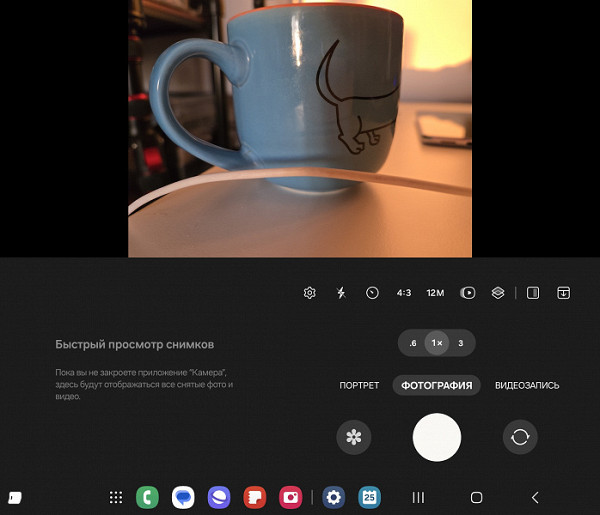
Support for artificial intelligence technologies is actively being implemented in the Samsung mobile device management interface under the name Galaxy AI. This function includes a wide range of capabilities, such as automatic translation, editing of correspondence style, brief summaries of website content and generation of simple texts. For example, in the Samsung Notes application, the neural network helps to translate, summarize and automatically format notes through the Note Assist function.
The function of translating PDF files is also available in the Notes application using PDF overlay technology. It is possible to convert audio recordings into text, which is especially useful when learning via webinars. In addition, there are functions for working with graphics and photos, such as AI drawing. For example, the neural network can transform its own handwritten sketch into a full-fledged drawing.
The smartphone speakers work in stereo mode, sound clear and very loud. Popular codecs are supported for wireless headphones (there is support for aptX HD).
Performance
The Samsung Galaxy Z Fold6 smartphone is based on the Qualcomm SM8650-AC Snapdragon 8 Gen3 SoC. It is equipped with 12 GB of LPDDR5X RAM and offers options for built-in UFS 4.0 storage of 256, 512 GB or 1 TB. However, installing a microSD memory card is not possible. The device supports connecting external gadgets via the USB Type-C port in USB OTG mode.
This powerful flagship platform, manufactured using the 4 nm process technology, provides the smartphone with about 1.5 million points in AnTuTu. The graphics adapter supports the Vulkan API, which guarantees excellent performance for any task — from smooth interface operation to complex video games and video shooting up to 8K. All games run without slowdowns, even at high graphics settings, although the device body can heat up significantly.
Testing in complex tests AnTuTu and GeekBench:
We have collected the smartphone test results on the most current versions of popular benchmarks in tables for convenience. Usually, several other devices from different segments are added to the tables, which were also tested on the latest versions of the same benchmarks, to provide a visual assessment of the data obtained. Unfortunately, one comparison cannot reflect the results from different versions of benchmarks, so many worthy and current models remain «behind the scenes», since they were tested on previous versions of the programs.
| Samsung Galaxy Z Fold6 (Qualcomm Snapdragon 8 Gen3) | Samsung Galaxy Z Flip6 (Qualcomm Snapdragon 8 Gen3) | Honor 200 Pro (Qualcomm Snapdragon 8s Gen3) | Honor 200 (Qualcomm Snapdragon 7 Gen3) | Google Pixel 8 Pro (Google Tensor G3) | |
|---|---|---|---|---|---|
| AnTuTu (v10.x) (higher is better) | 1514467 | 1240319 | 1297546 | 792657 | 1033512 |
| GeekBench 6 (bigger is better) | 1851/6398 | 1999/6557 | 1740/4535 | 1159/3206 | 1566/3701 |
Testing the graphics subsystem in GFXBenchmark gaming tests:
| Samsung Galaxy Z Fold6 (Qualcomm Snapdragon 8 Gen3) | Samsung Galaxy Z Flip6 (Qualcomm Snapdragon 8 Gen3) | Honor 200 Pro (Qualcomm Snapdragon 8s Gen3) | Honor 200 (Qualcomm Snapdragon 7 Gen3) | Google Pixel 8 Pro (Google Tensor G3) | |
|---|---|---|---|---|---|
| GFXBenchmark Aztec Ruins OpenGL (1080p Offscreen, fps) | 129 | 182 | 45 | 56 | 107 |
| GFXBenchmark Aztec Ruins Vulkan (1080p Offscreen, fps) | 134 | 169 | 129 | 66 | 108 |
| GFXBenchmark Car Chase ES 3.1 (1080p Offscreen, fps) | 88 | 95 | 96 | 47 | 78 |
| GFXBenchmark Manhattan ES 3.1 (1080p Offscreen, fps) | 149 | 222 | 169 | 83 | 142 |
| GFXBenchmark T-Rex (1080p Offscreen, fps) | 292 | 456 | 434 | 174 | 328 |
Testing in browser cross-platform tests:
| Samsung Galaxy Z Fold6 (Qualcomm Snapdragon 8 Gen3) | Samsung Galaxy Z Flip6 (Qualcomm Snapdragon 8 Gen3) | Honor 200 Pro (Qualcomm Snapdragon 8s Gen3) | Honor 200 (Qualcomm Snapdragon 7 Gen3) | Google Pixel 8 Pro (Google Tensor G3) | |
|---|---|---|---|---|---|
| Google Octane 2 (bigger is better) | 73929 | 64754 | 19467 | 24106 | 52617 |
| JetStream (bigger is better) | 210 | 172 | 70 | 60 | 102 |
Memory speed test results:
Heat
We test for performance degradation when heating using the Burnout Benchmark program, which allows you to load the CPU, GPU and NPU:
| Load on | Heating performance, as a percentage of maximum |
|---|---|
| CPU | 21% |
| GPU | 37% |
| NPU | 17% |
Battery life
The Samsung Galaxy Z Fold6 smartphone is equipped with a relatively small battery with a capacity of 4400 mAh. However, the battery life, tested both on the large internal screen and on the external one, showed good results. Of course, on the external screen, the smartphone can play the same video for several hours longer.
The testing was carried out at a standard power consumption level without using the power saving modes, which are also available in the device. The testing conditions included the minimum comfortable brightness level (about 100 cd / m²). The tests included: endless reading in the Moon + Reader app (with the standard light theme), continuous viewing of HD video (720p) over a home Wi-Fi network, and the Injustice 2 game with automatic graphics settings.
| Battery capacity | Reading mode | Video mode | 3D gaming mode | |
|---|---|---|---|---|
| Samsung Galaxy Z Fold6 | 4400 mAh | 19:00 | 18:00 | 6:00 a.m. |
| Vivo X Fold3 Pro | 5700 mAh | 19:00 | 17:00 | 6:00 a.m. |
| Oppo Find N3 | 4805 mAh | 20:00 | 18:00 | 6:00 a.m. |
| Honor Magic6 Pro | 5600 mAh | 38 h 00 m | 30:00 a.m. | 9:00 a.m. |
| Google Pixel 8 Pro | 5050 mAh | 22:00 | 18:00 | 7:00 a.m. |
| Honor Magic V2 | 5000 mAh | 21:00 | 17:00 | 6:00 a.m. |
| Oppo Find N2 | 4520 mAh | 20:00 | 17:00 | 5:00 a.m. |
| Oppo Find N2 Flip | 5000 mAh | 20:30 h. | 19:00 | 8:00 a.m. |
All figures are maximum values obtained under «ideal» conditions, including no SIM cards installed. Any changes in the usage scenario will likely result in a decrease in these figures.
There is no charger included with this smartphone, so the charging speed will depend on which power adapter you buy separately. The device supports Power Delivery 3.0, but the maximum charging power is 25W, which does not provide truly fast charging in this generation. A full charge from the proprietary charger takes over an hour. Wireless charging with a power of 15W is also available.
Summary
With the sixth generation, Samsung has almost completely eliminated the shortcomings of the Fold series. Now you can forget about the gap between the halves when folded, slippery surfaces and limited battery life. The Galaxy Z Fold6 is a full-fledged flagship with a high-quality and practical body, excellent technical characteristics and a unique form factor that may not suit everyone. However, for an audience that needs a folding smartphone with a large screen, the Fold series remains the benchmark for other manufacturers looking to enter this segment. Many of them have already introduced worthy competitors, but thanks to the strength of the brand, Samsung continues to ensure high sales of the Galaxy Z Fold series.

